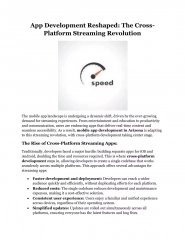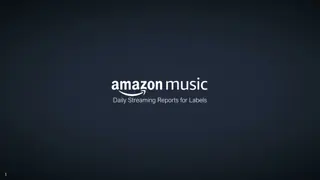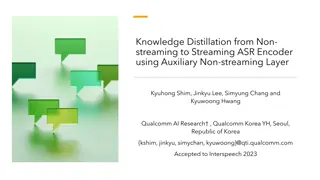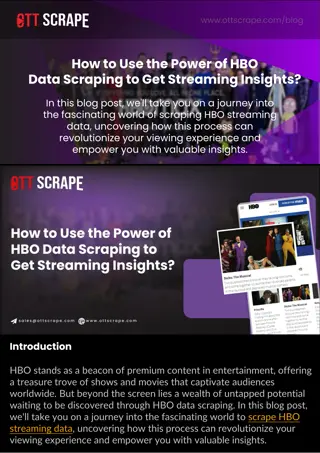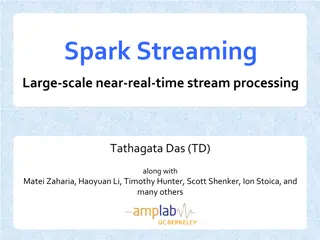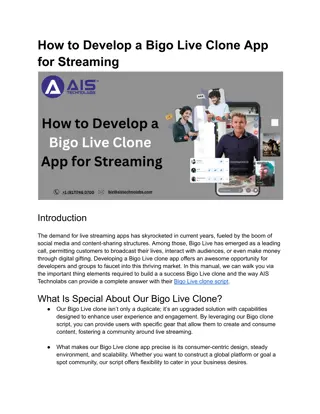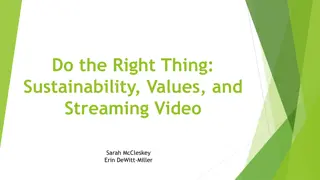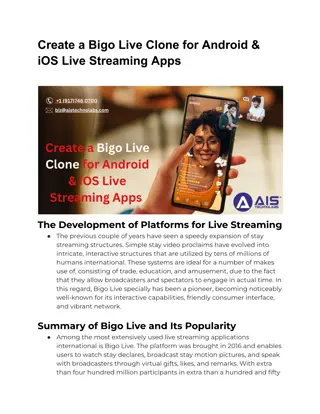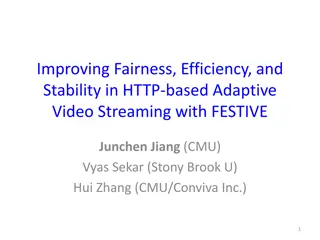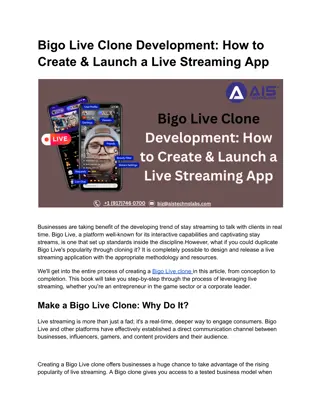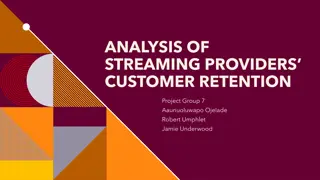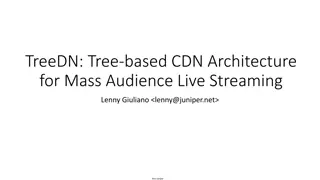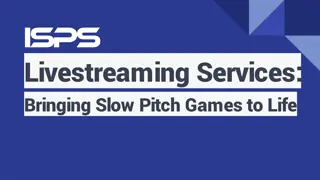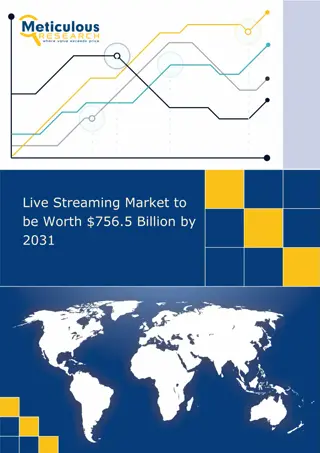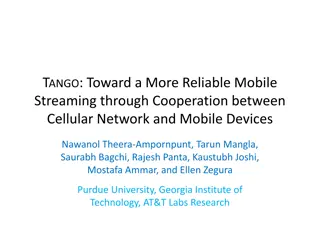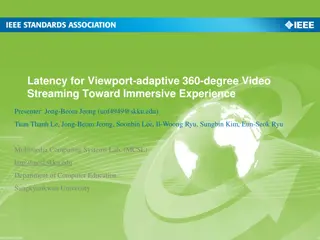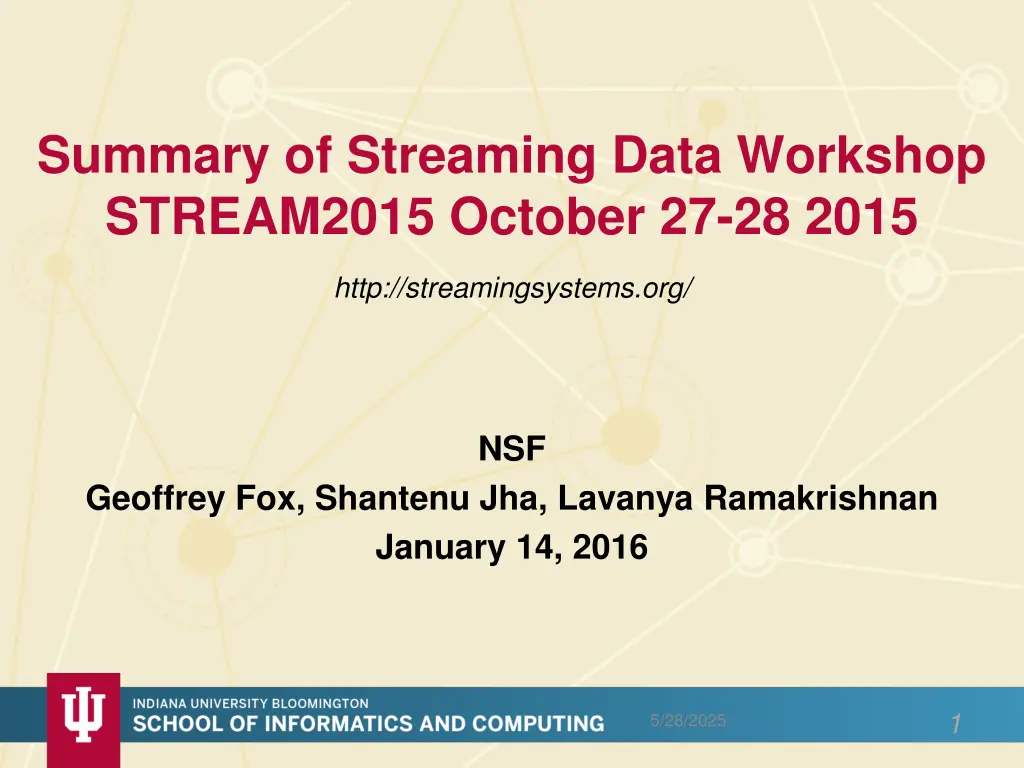
Workshop on Streaming Data Overview - STREAM2015 Insights
Explore the highlights of the STREAM2015 workshop focusing on streaming data, steering applications, and industry involvement. Discover the significance of real-time processing and the diverse range of fields streaming technology impacts.
Download Presentation

Please find below an Image/Link to download the presentation.
The content on the website is provided AS IS for your information and personal use only. It may not be sold, licensed, or shared on other websites without obtaining consent from the author. If you encounter any issues during the download, it is possible that the publisher has removed the file from their server.
You are allowed to download the files provided on this website for personal or commercial use, subject to the condition that they are used lawfully. All files are the property of their respective owners.
The content on the website is provided AS IS for your information and personal use only. It may not be sold, licensed, or shared on other websites without obtaining consent from the author.
E N D
Presentation Transcript
Summary of Streaming Data Workshop STREAM2015 October 27-28 2015 http://streamingsystems.org/ NSF Geoffrey Fox, Shantenu Jha, Lavanya Ramakrishnan January 14, 2016 1 5/28/2025
Overall Information I STREAM2015 proposed in response to NSF ACI s Dear Colleague Letter [DCL15053] to the community to identify the gaps, requirements and challenges of future production cyberinfrastructure beyond traditional HPC. Built on ongoing work from co-PI s on technology for streaming and use in DoE especially for steering and analysis of instruments such as light sources Modest AFOSR funding October 27-28 2015 Indianapolis http://streamingsystems.org/ has background material plus STREAM2015 resources 43 attendees 17 Workshop white papers (from call for participation 29 Presentations (28 with slides; 23 with videos) Next week it will have workshop report posted 5/28/2025 2
Overall Information II Lot of enthusiasm from participants for workshop, field and continuation of activities Different slice of researchers from normal Reasonable Industry involvement: Amazon, Google, Microsoft. Johnson Controls (Industrial Internet of Things IIoT) Missing IBM, Twitter, GE (IIoT leader with Predix) and others Covered field broadly including technology, applications and education There will be a DOE focused and funded follow up workshop in Washington DC STREAM2016 March 21-24, 2016 Certainly additional focus on DoE instruments Working with Rich Carlson on planning 5/28/2025 3
What are we Studying A stream is a possibly unbounded sequence (time series) of events. Successive events may or may not be correlated and each event may optionally include a timestamp. Exemplars of streams include time-series data generated by instruments, experiments, simulations, or commercial applications including social media posts and IIoT. Steering is defined as the ability to dynamically change the progression of a computational process such as a large-scale simulation via an external computational process. Steering, which is inevitably real-time, might include changing progress of simulations, or realigning experimental sensors, or control of autonomous vehicles. Streaming and steering often occur together. An example could be for an exascale simulations where it is impractical to store every timestep and the data must be reduced, resulting in streams which may constitute the final results from the simulation in a manner similar to the way we use data from an instrument in a massive physics experiment. 5/28/2025 4
Streaming/Steering Application Class Details and Examples Features Software buildings, transportation, Electrical Grid, Environmental and Robotics, Autonomous vehicles, Drones Smart watches, bands, health, glasses, telemedicine Defined Machines, Smart Industrial Internet of Things, Cyberphysical Systems, DDAS, Control Real-time needed; data varies from large to small events response often 1 seismic sensors, 2 Internet of People: wearables Small independent events Social media, Twitter, cell phones, blogs, e-commerce and financial transactions Satellite and monitors, National Security: Justice, Military Sophisticated analytics across many events; numerical data Missile Often large volumes of data and sophisticated analysis Study algorithms, outliers, graph analytics of information flow, online 3 text and airborne Surveillance, defense, Anti-submarine, Naval tactical cloud remote sensing, 4 image Astronomy, Light and Neutron Sources, TEM, Instruments like LHC, Sequencers Scientific Data Analysis in real time or batch from large sources. LSST, DES, SKA in astronomy Real-time batch, or even both. large complex events or sometimes 5 Link large scale parallel simulations dependent data. Sensitivity to latency. Integrate typically distributed simulations to enhance quality. data into with time 6 Data Assimilation Climate, Fusion, Molecular Dynamics, Materials. Typically local or in-situ data. HPC Big Data Convergence Avionics. Control Experiments. Network monitoring. Data could be local or distributed Increasing simulations scale in size. bottleneck as 7 Analysis of Simulation Results of simulations or Variety of scenarios similarities to robotics with 8 Steering and Control
State of the Art I Classification of Application Initial investigation of application characteristics to define/develop classification Event size, synchronicity, time & length scales.. See table on last slide Current solutions Impressive commercial solutions for commercial applications: applicability to science unclear! Plethora of local point solutions [see report for detailed listing] but few end-to-end streaming infrastructure! Opens up issues in distributed computing, e.g., performance, fault-tolerance, dynamic resource management.
State of the Art II Convergence of Streaming + HPC Commercial solutions do not address this space! Interaction between big and streaming data technologies Integrate streaming data with HPC simulations One important facet of steering Plethora of issues in distributed workflow Current HPDC not optimized for streaming data All of the above have implications for NSF s future infrastructure
Future Research Directions in STREAM2015 Report Streaming System infrastructure including HPC Big Data convergence Programming Models and runtime Note commercial solutions are better than existing Apache solutions (4 year old commercial systems!) e.g. Twitter announces Heron to replace Storm Links to dataflow and publish-subscribe technology Algorithms including existing and new online (touch each data point once) and sampling methods Steering and Human in the Loop Benefit from integration with streaming data systems 5/28/2025 8
Map Streaming Architecture used in Apache Storm and Commercial Solutions Dataflow for computing (maps) Data (Streaming Events) buffered by publish- subscribe brokers Apache Kafka RabbitMQ . IU released HPC enhancements to Storm for higher performance inter- map communication 5/28/2025 9
Near Term Action Items Discovered interesting interdisciplinary community need to build and sustain e.g. NSF RCN? Understand different applications e.g. relation between science and commercial application characteristics Develop Benchmarks and Application Collections Prototyping of existing and potentially new systems Clouds HPC External and internal I/O 5/28/2025 10

